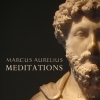
“If you wish to understand the Universe, think of energy, frequency and vibration. “ Nikola Tesla
Many Buddhist mantras don’t have concrete meaning because they were created in a language no longer known. Therefore they carry some incomprehensible syllables. These oral teachings allow the mind to achieve a state of equanimity, and they also boost concentration and focus.
Mantras have a special role that goes way beyond relaxation, they have a positive effect on the person’s energy field. It is said that this changes a person’s perception, allowing them to experience the beauty of neutral reality.
Any form of meditation helps control emotions and the balance of energy within the body, and chanting mantras facilitate this tremendously. Some chanting mantras are in Sanskrit while others are in Tibetan. There are also some in ancient Japanese. It’s hard to develop translations to the chants, because meanings are supposed interfere with the effects of the mantra.\
What are Buddhist mantras?
A Buddhist mantra is a series of syllables technically designed to cause a desired energetic effect. Each letter brings with it an elevating force, and when coupled with repetition begins to uplift the seeker. Thus, mantra is a vehicle to enlightenment
The longer mantras are called dharanis. But seekers generally start with the shorter preparatory syllables. “Man” means “think” and “tra” means instrument. So mantra is a thinking instrument. I might say, for me it has become a means of meditation. Most of the time I choose one, I read about its meaning, and then I work on memorizing its words. A couple days later, I focused on repeating it correctly, this process takes me into an hour or more of meditation.
The style, length, rhythm and even the origin of the lyrics of the mantra differ, but the core will always be aimed at achieving Buddha’s teachings. This goal is for us to begin to carry the vibration of those teachings. Thus living in synchronicity of the compassionate nature of the universe.
How did Buddhist mantras appear?
It’s important to understand that there’s a difference between the Buddhist and Hindu mantras. Since Hindus believe in deities, so each mantra is related to one or more of them. However, in Buddhism mantras are used as tools to help us reach nirvana, they are unrelated to deities.
Buddhist mantras appeared when monks were trying to fix in their minds a specific thought. This was obtained through relaxation, concentration and meditation. That’s why mantra can also be known as the birthplace of wisdom. All syllables of a mantra are pre-determined, carrying representations of all Buddhas. That’s why they are blessings mixed with karmic growth, in which we receive the Buddha’s wisdom.
Benefits of powerful Buddhist Mantras
Buddhist mantras can help you connect with your inner self, they also helo you control anxiety and fear. They can also increase concentration and relaxation. They have been known to be helpful in healing and improving the mental, spiritual and physical conditions which can plague many of us. They can also renew good energy, create social harmony, and an overall wonderful sense of well-being.
Mantras are an excellent tool in the process of spiritual revelation. They are also helpful in strengthening the heart, and promote better breathing, which is an important tool in the mindfulness and meditation process.
Much research has already shown that meditation stimulates memory, elevates endorphin levels, and reduces emotional instability. This brings relief to syndromes and traumas.
People that practice mantras, I would include myself among them, realize that the sounds are capable of changing our inner energy as well as that of the environment. It happens as a product of a peaceful and aware thought process developed by mantras.
The Sutta of the Heart
The sutta of the heart contains lots of wisdom and power, and it has been broken into many heart mantras. We can find different parts of it and all of them will mean the same thing.
I chose to speak about this sutta because it is considered the most important in the Mahayana tradition. Mahayana means great vessel, which takes most people to nirvana, and certainly, this sutta plays its part really well.
The mantras taken from this Sutta are known for their ability to influence the field of the heart. This changes the inner atmosphere as much as the external atmosphere around the ones impacted by it.
You may find many versions of this mantra in languages like Japanese, Tibetan, even in a western languages. But like I mentioned before, what matters is the energy of the words and not what they mean.
In the case of this mantra, I would suggest the study of the sutta. Learning the mantras. The ones that feel right to you or the ones that please you.
After a while you’ll begin to experience the words, and will slowly become embraced by them. This is the power of the good expressed in the chant. It is said that this sutta summarizes the wisdom of all suttas which makes it really powerful – Prajnaparamita – the perfect wisdom.
Being as such, any part of it will represent a bit of all the buddha teachings.
Once again, I will insist, read the whole Sutta, and learn by heart this part: “gate, gate, paragate, parasamgate, Bodhi, Svaha.” This is called the absolute truth. It means: gone, gone, gone over, gone fully over, Awakened, so be it.










